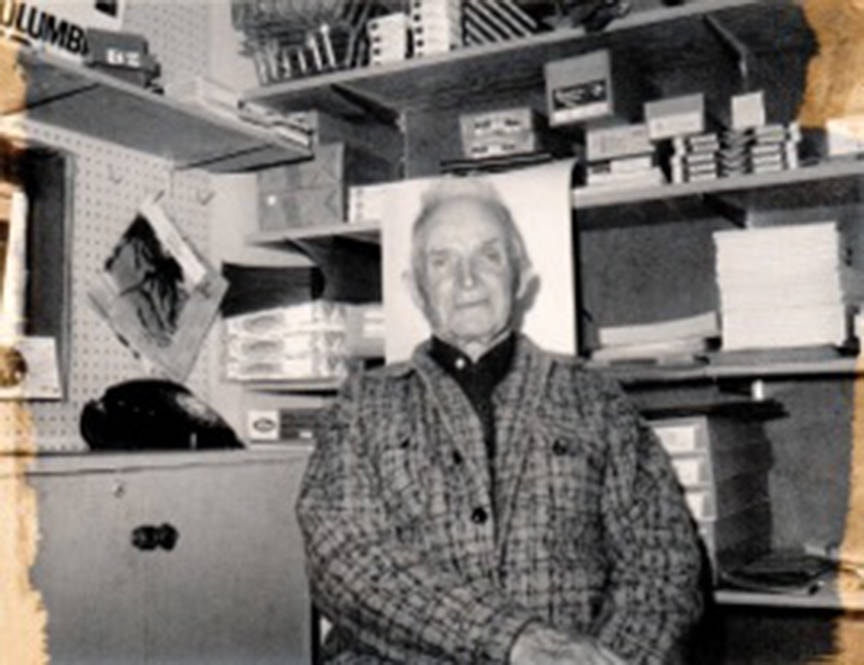© Michael Riis-Christianson and the Lakes District Museum Society
In the early part of the 20th Century, much of the country around what is now Grassy Plains was known as “Bickle.” The country derived its name from the first Caucasian family to settle there.
Bill Bickle and his brother Frank arrived there in 1907 from the west coast, where Bill had helped survey and clear land for the present community of Prince Rupert. They traveled first to the Bulkley Valley; after a brief stop, they headed further east in January on the heels of a heavy snowfall. They brought with them five horses; two were used to break trail, while the remainder pulled their sleigh.
The brothers met Matthew Sam at Francois Lake, and from him purchased hay for their animals. A cold snap had caused the lake to freeze early that year, and with Sam guiding them along the ice, arrived safely at the site chosen for their homestead. Along the way, they came upon a small lake and the remains of an indigenous settlement, complete with decaying totem poles.
The Bickles set up a tent, and in the spring, used their horses to clear land for a farm. When preparations were complete, they purchased cattle from local indigenous people. Predators followed the cattle and placed the fledgling enterprise in jeopardy. There were so many bears in the area that Bill had to kill one a day for a week just to save his calves.
Other adventurous souls followed the Bickles. Amross Blaney brought his famous oxen (known throughout the region as “Blaney’s Bulls”) to the area, and Dave Irons, Hugh Matheson, Bill Blake, and Harry Marmouth settled near what became Totem Pole Lake. By 1910, the population of the area was such that it warranted a post office, which was set up at Bickle Lake. Frank ran the establishment and carried the mail by saddle horse.
The area’s agricultural potential attracted more settlers. Mr. and Mrs. A. Fair arrived in 1919, and a school opened at Bickle. It was short-lived, as the student body consisted entirely of the seven Fair children. When the Fairs moved on, so did the school.
Bickle finally got another school in 1921. Built by local residents on property owned by Charles Grasser, it remained in operation until 1942.
Today, you won’t find the community of Bickle on any modern map of the Southside. The land around the lake that bears the name of those pioneering brothers is known as Tatalrose. It’s still good farming country, though, and boasts some of the largest ranches in the region.
